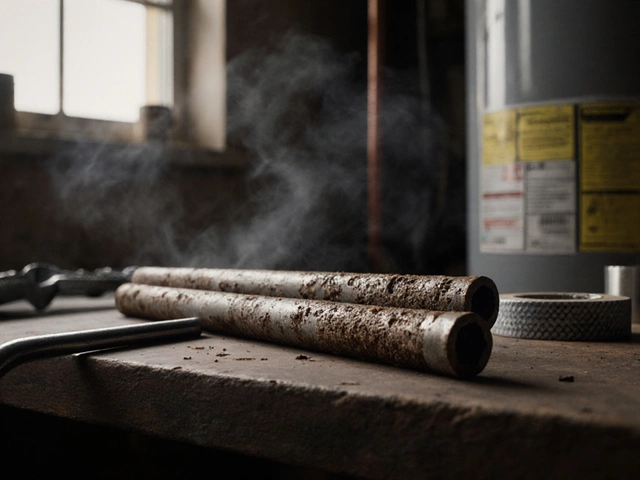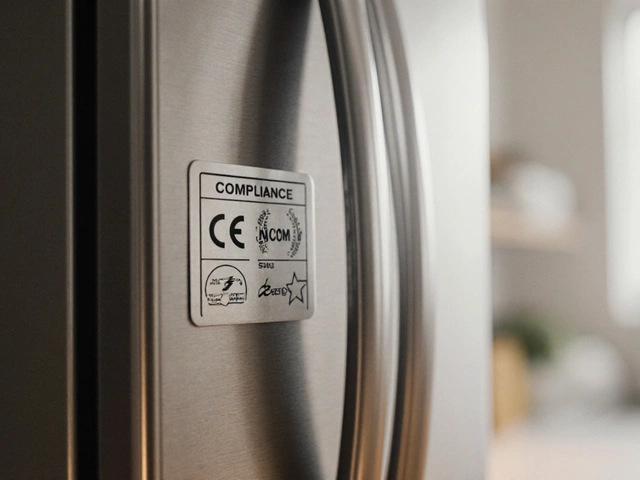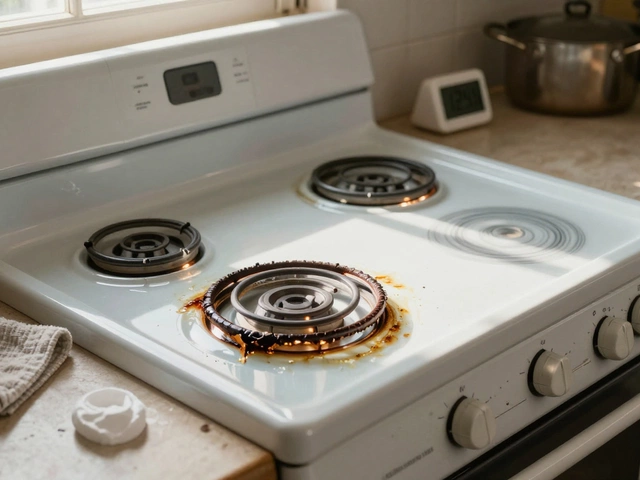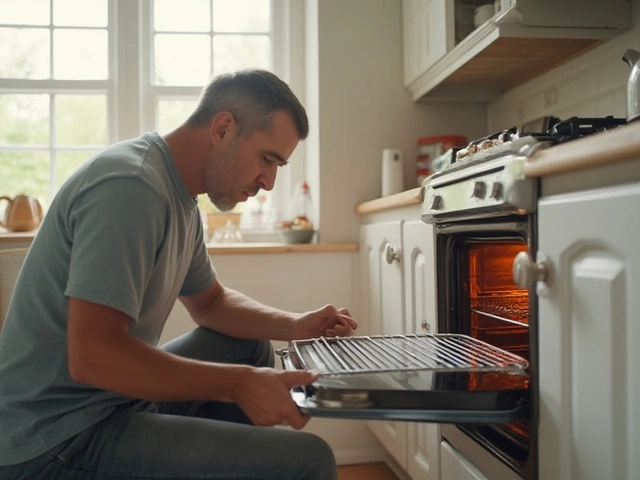Your washer isn’t magic. When it starts acting up—whether it's making a grinding noise, refusing to drain, or it just sits there looking dead—there’s always a reason. The trick is knowing what to check first, so you don’t waste a bunch of money or time on stuff that’s actually pretty simple.
Ever opened your washer to find water still sloshing around or your clothes stuck in a soggy mess? That could be a drain issue, a clogged filter, or even just the lid not closing right. Don’t panic. Most times, it’s not the death sentence for your machine that you might think.
Being able to spot the symptoms—like strange noises, water leaks, or cycles not finishing—puts you in the driver’s seat. A couple of basic checks with a flashlight and a screwdriver can tell you more than an hour scrolling through forums. Not sure where to start? You’re not alone—and trust me, troubleshooting washers is way less scary than it sounds.
- Recognizing Common Washer Symptoms
- Quick Checks You Can Do Yourself
- When to Dig Deeper (and When Not To)
- Next Steps Before Calling a Technician
Recognizing Common Washer Symptoms
Figuring out what’s wrong with your washer starts by paying attention to what it’s doing—or not doing. Sounds, smells, and weird movements all tell a story. If you nail down the symptom, you’re already halfway to a fix. Most washer problems show up as something obvious. Here’s what to actually look for:
- No Power or Won’t Start: Dead silence after pressing the start button? Could be a blown fuse or even a door switch that isn’t engaging.
- Won’t Spin: Drum won’t budge during the spin cycle? Common culprits include a bad lid switch, a broken belt, or a jammed motor.
- No Drain or Water Left Inside: If water’s sitting in the tub when your cycle ends, look for a clogged pump, a kinked hose, or a blocked filter.
- Leaking Water: Puddles under or around the washer? Usually, it’s either a loose hose, a cracked drain pump, or a door gasket gone bad.
- Unusual Vibrations or Loud Noises: If your washer sounds like it’s about to take off, something’s off-balance. Sometimes your load is all bunched up to one side, but other times, you might have shock absorbers or drum supports wearing out.
- Bad or Burnt Smells: This can mean mildew if it’s moldy, or a motor or belt burning out if it’s a sharp, electrical smell.
- Cycle Won’t Complete: A washer that stops mid-cycle could have a glitchy control board, timer, or water supply problem.
Most people face at least one of these washing machine troubleshooting headaches every few years. It’s worth mentioning: According to a 2023 survey by a major US appliance repair site, the top three reported fix washer issues are failing to drain, spin problems, and major leaks, making up over 60% of service calls. Here’s a quick snapshot:
| Symptom | % of Service Calls |
|---|---|
| Won't Drain | 27% |
| Spin Issues | 22% |
| Leaks | 14% |
Next time your machine acts up, grab a notepad and jot down exactly what it’s doing (or not doing). Specifics make all the difference when you're trying to diagnose washing machine problems yourself—or explaining things if you end up calling a tech. Pinpointing the symptom is your first step toward getting things back to normal, minus the guesswork.
Quick Checks You Can Do Yourself
When your washing machine stops working like it should, running a few quick checks can save you a ton of time and maybe even some cash. Most washer problems have clear signs if you just know where to look. Here’s what you can do before thinking about a pricey repair call.
- Check the Power: Sounds obvious, but you’d be surprised. Make sure the washer is plugged in properly. Try a different outlet or plug something else into the current one to see if it’s working.
- Inspect the Door or Lid: For most machines, if the door or lid isn’t fully closed, the cycle won’t start. Listen for a click when you shut it. If you don’t hear one, the latch could be faulty.
- Look at the Hoses: Every year, thousands of calls are about leaks caused by loose or cracked hoses. Check both the water supply hoses and the drain hose at the back for drips, cracks, or loose connections.
- Make Sure It’s Not Overloaded: Stuffing the drum full throws off the balance and makes strange banging sounds. If your machine’s hopping around the laundry room, take out some clothes and try again.
- Check for Clogs: Open the filter hatch (usually found near the bottom front of the machine) and see if lint, coins, or small socks are blocking up the works. Clean it out, but have a towel ready—standing water often pours out!
- Cycle Settings: Accidentally nudged the spin speed to zero? Or set a delay start? Double-check all the settings on your control panel to rule out human error. Digital displays sometimes show error codes—quick Google search for your model and code tells you a lot.
If your washer isn’t draining, give the drain hose a once-over. Kinks or clogs are common. According to 2023 repair stats, over half of drainage issues came from simple clogs. No fancy tools required—just a bucket and some patience.
| Common Issue | Quick Fix |
|---|---|
| Machine won’t turn on | Check plug, outlet, and breaker |
| Water not draining | Clean filter, check drain hose |
| Door won’t lock | Wipe door seal, inspect latch |
| Loud banging | Redistribute load, level machine feet |
These DIY washing machine troubleshooting steps cover most cases. You don’t have to be an expert—just a little curious. Start here, and you’ll knock out half of possible washer problems without breaking a sweat.

When to Dig Deeper (and When Not To)
Here’s the thing: not every washer problem needs a deep dive. Sometimes, you can fix it with a quick reset or by clearing out a sock from the filter. But if you’ve gone through the easy checks—like making sure your machine is plugged in, the water supply’s good, and there’s nothing blocking the drain filter—it might be time to dig deeper.
If your washing machine troubleshooting points to leaks under the washer, that’s usually more than just a loose hose. Internal seals or the tub itself might be to blame. Sharply loud banging or constant thumping noises (not just the thud when the cycle starts) could mean a problem with the drum bearings or suspension rods. These things are fixable but do take tools and a willingness to get your hands dirty.
If your machine keeps tripping circuit breakers or gives off a burning smell, stop right there. Electrical issues are nothing to mess around with. At that point, you’ve got to call a pro.
- Steady leaks: If you spot water around the machine before and after use, check hoses and connections first. If that doesn't work, deeper parts like the water pump or internal seals could be the problem.
- Strange Noises: Repetitive clunking, scraping, or grinding during spins usually means it’s internal—possibly bearings or suspension issues.
- Drum not spinning: If the drum doesn’t move after clearing loads and checking the lid switch, it could be the motor coupling or drive belt.
- Electrical burning smell: Stop. Unplug it and call an expert.
A lot of folks try to fix everything themselves, but, honestly, if you need to take apart half the machine, it’s often cheaper and safer to let a technician handle it. According to a recent Consumer Reports survey, people who dug into advanced repairs without experience ended up calling for help anyway 70% of the time, after wasting hours (and sometimes making the problem worse).
| Symptom | DIY? | Call a Pro? |
|---|---|---|
| Clogged drain filter | Yes | No |
| Broken drum belt | Maybe, if handy | Recommended |
| Leaking tub | No | Yes |
| Electrical failure | No | Absolutely |
So, trust your gut—and your limits. If it feels like it’s more than your toolbox can handle, save yourself the headache and let a pro take it from there.
Next Steps Before Calling a Technician
So you’ve run through all the basic stuff—unplugged, checked hoses, made sure the lid is shutting, and cleaned out the filter—but your washer problems are still hanging around? Before you pick up the phone and call in a pro, there are a few more things you should try yourself. You’d be surprised how often people pay for a fix they could’ve handled in five minutes flat.
First off, always check your washing machine’s user manual. Seriously. There’s usually a troubleshooting chart in the back with exact steps based on your washer’s weird behavior. Some error codes point right to what needs fixing, like “F21” on certain Whirlpool models, which usually means a drain issue. Ignoring these codes is like ignoring a warning light on your dashboard.
- Double-check that the washer is level. If it’s rocking like a seesaw, many machines simply won’t spin.
- Take another look at the hoses. Are they kinked, leaking, or clogged? Sometimes a sock or tiny piece of clothing gets sucked into the drain hose and totally blocks it.
- Look inside the drum for loose items. Coins, bra wires, or even those tiny Lego pieces have caused more washing machine troubleshooting nightmares than you’d think.
- If you have a top-loader, try pushing on the lid switch with a pen or finger while it’s running. If your machine starts up, that switch wants replacing.
- Run a “rinse and drain” only cycle. If water leaves the tub just fine but a regular wash still stalls, you may have a control board hiccup. Sometimes, unplugging for a solid 10 minutes actually “resets” modern washers—kinda like rebooting your phone.
According to Consumer Reports, "as much as 30% of service calls for washers are for issues that homeowners could have resolved themselves by checking for clogs or simple electrical problems."
”Often, a quick filter clean or hose check is all it takes to avoid a repair bill,” says appliance technician Alex Price, with over 20 years in the field.
| Quick Fix | Average Technician Charge |
|---|---|
| Clogged drain filter cleaned at home | $80-$120 |
| Unkinked hose | $70-$100 |
| Lid switch replaced by technician | $120-$180 |
Taking a few more minutes to do these checks can save you real cash and help you talk to a technician with confidence if it comes to that. Have the washer’s make, model, and any error codes ready if you do need to call. It shows you’ve done your homework, and the tech will get right to the point.





